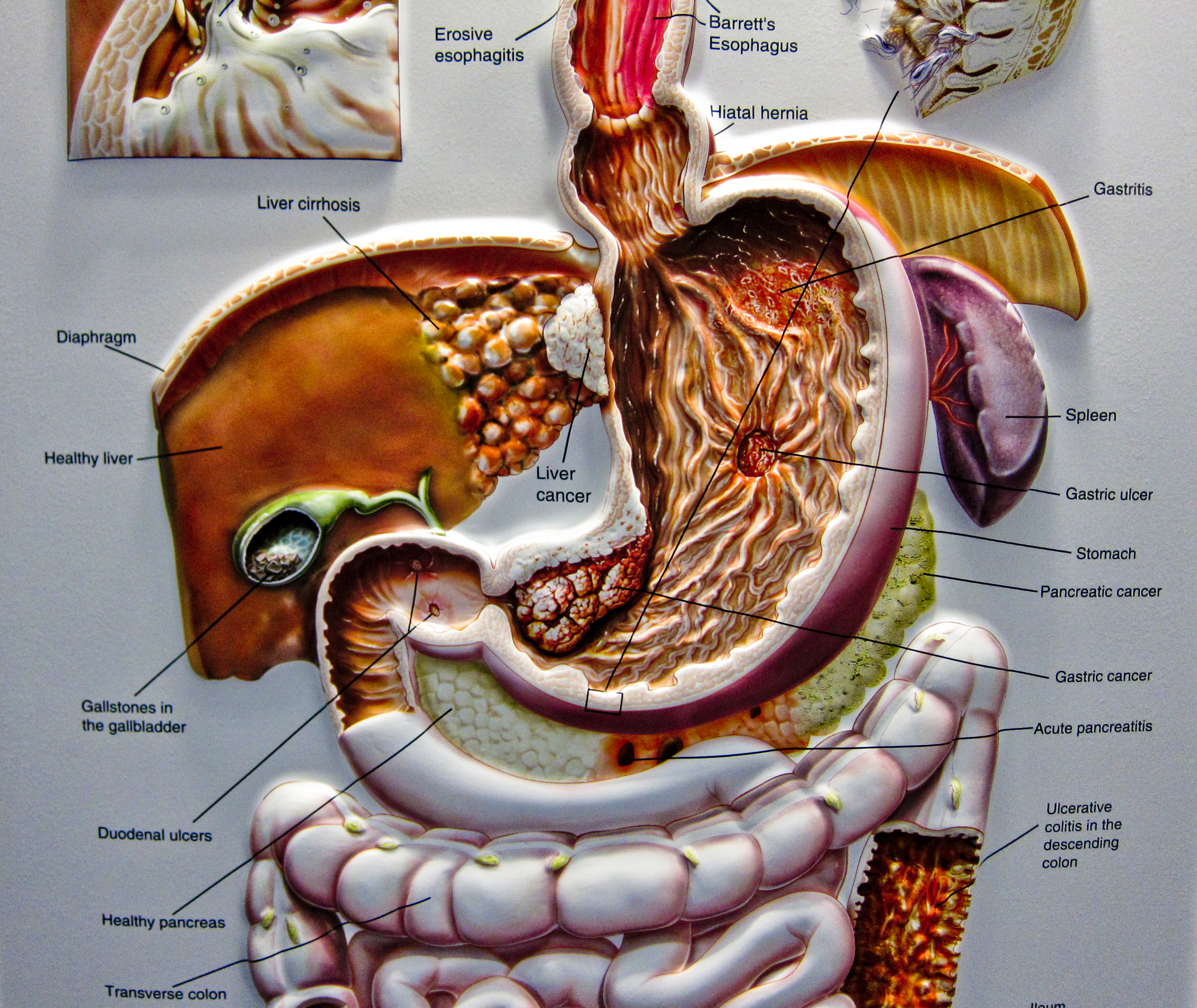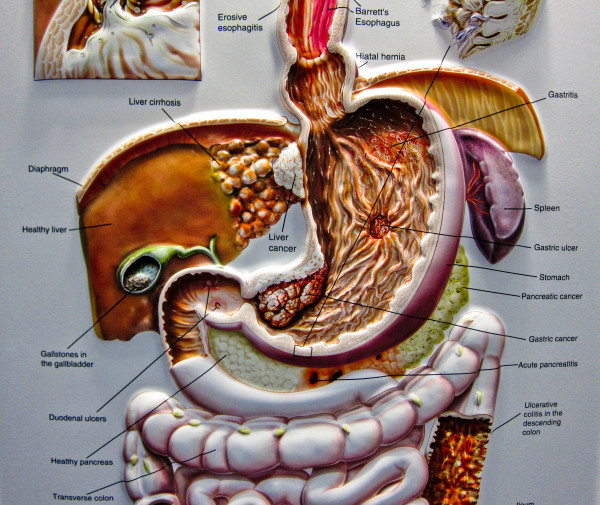As an Asian American, there’s one killer out there that affects more Asian Americans than any other. The leading cause of death for Asian Americans since 1980 is cancer
(unlike for the general population of the U.S. which has heart disease as the number one killer). Among Asian Americans, colorectal cancer is the second most common diagnosed cancer, and it is the third highest cause of cancer-related mortality. Colon cancer is also referred to as the “silent killer” since it generally strikes without warning and takes a while for symptoms to appear. For Asian Americans it’s even deadlier since Asian Americans, especially Koreans and Filipinos are less likely to have any type of colorectal cancer screening.
Full disclosure, my father passed away from colon cancer at the age of 69. He was diagnosed with colon cancer when he was 66, and at the time of his diagnosis, the cancer already had the upper hand. He was diagnosed with stage four colon cancer, the highest, and most fully involved stage. When my dad was diagnosed, I visited my doctor, and he assured me that I wasn’t at any higher risk for colon cancer since my dad was in his late sixties, and my mom’s breast cancer was unrelated and did not put me at a higher risk. But he still thought it was a good idea I have at least a basic colon cancer screening to start.
My doctor arranged for me to have a Fecal Occult Blood Test (FOBT), basically a test that looks for microscopic traces of blood in your stool, one indication that a person may have colon cancer. It was a simple test, non-invasive, and painless. For me it was quick way to see if I had anything to worry about and my test came back clear. I was around 40 years old at the time, and my doctor made it clear to me that I wouldn’t need additional screening for colon cancer until I turned 50.
Fast forward to the present, and my doctor has moved on from practicing medicine to other more philanthropic activities and I found myself with a new primary care practitioner at the beginning of this year. At our first meeting we reviewed my family history, and the new doctor suggested we ask an oncologist for a recommendation on an additional cancer screening before I turned 50 given my father’s early and severe colon cancer diagnosis. The oncologist agreed, and the recommendation was that I have my first colonoscopy at the age of 46.
Getting the appointment for the colonoscopy was probably the most difficult part of the entire ordeal. I have Kaiser, and unless you have an urgent need, you’re at the back of the line. My doctor sent over the request to the outpatient department, and a few days later I get a letter asking me to call in to schedule my colonoscopy. I would call in, and I’d get a little recording that would say, “We’re currently out of available appointments this week for procedures. Please call again next week. We’re currently scheduling appointments for the month of XYZ,” where XYZ would be something 2 to 3 months as way. So I would give up trying to schedule an appointment for the week, and during the week I didn’t call in, I’d get a little letter reminding me I still needed to schedule my appointment. It went this way for a couple of weeks and I felt like I was either in “Waiting for Godot” or some bad version of a Catch-22. Patience finally paid off and I got through and was told I could have an appointment, and yes it was 3 months away. So I took the appointment and waited.
In the interim, I got two different sets of instructions for preparing for the colonoscopy. One was emailed to me from the appointment nurse. It outlined a regiment of taking polyethylene glycol, also known as Miralax (generally used as an over-the-counter constipation remedy), the day prior to the procedure. The second set of instructions was sent by US postal mail to me from the doctor performing the procedure and included a prescription for Colyte, a prescription formula used for colonoscopy prep. Without any guidance I chose to do the prep the doctor sent, since I figured a prescription drug was going to be more effective then the constipation remedy we already give our daughter, the one that doesn’t eat vegetables and let’s just say we’ve gotten very intimately familiar with Miralax, since she was born.
During the wait period, I heard from friends and family about their experiences with colonoscopy. Some told me it was painful, others said to be sure to ask for pain-killers. So I waited with dread. Finally, three days before the procedure I had to start on my modified diet. The instructions said to have a low-fiber diet starting 3 days before the colonoscopy. My first reaction was, “What the heck is a low-fiber diet?”, so off I went to the internet for the explanation. Basically avoid raw vegetables and fruit, anything with whole wheat, cracked wheat and grains. What you can eat includes meat, white bread, saltine crackers, well-cooked vegetables with seeds or skin. That diet is a lot harder to come by if you don’t cook yourself than it sounds. During my last meal before I had to start on the all-liquid part of the regimen, we ate out, and I ordered a seafood enchilada (supposedly made with fish and shrimp) with a side of creamy white rice. Of course I found bits of red and green pepper and corn throughout all of my food when it arrived. I ate it anyway and hoped for the best.
The day before the procedure I started the all-liquid diet. Only clear liquids, and half of the gallon of Colyte prep between 4 and 6 pm the night before the procedure. The only exception to the clear liquids, was the allowance for Jello, either yellow or green. No blue or red Jello, as the coloring might mimic the presence of blood. The clear liquids was pretty easy, even with all the food temptations throughout the day. But I was getting hungry by dinner time, when I was supposed to start my Colyte prep. I had prepared in advanced and found the only box of yellow Jello in the house and had mixed it up and poured the mix into a small loaf pan and put in the refrigerator planning on having it as my dinner. Bad timing though I ate half the Jello loaf, just before my Colyte prep, which meant I wasn’t very thirsty/hungry for more, and I had to drink half the bottle of Colyte (half a gallon of liquid) in the next two hours. And you know it’s not going to be pleasant tasting when they include a “flavor pack” for you to mix into Colyte prep.
Actually at first taste the Colyte with the flavor pack wasn’t bad, it isn’t until later when you’re trying to force your third cup down that you think it tastes a little fishy, and I got through it. It’s what comes next that’s the unpleasant part, and I’ll spare you the gory details, but lets say the object of Colyte is clear out your colon for the inspection so what comes next is the clearing out. It’s mostly over by bedtime, and you get to awaken the next day, the day of the procedure for more Colyte fun.
The instructions for the day of the procedure continue with the liquid diet, and then starting and then finishing the remaining Colyte between 3 and 5 hours prior to the procedure appointment time, and no more to drink after the last of the Colyte. After the second Colyte cleanse, I was off to the hospital with my driver. The driver is a requirement set by the hospital, if you don’t have a driver with you (to take you home after the procedure) they won’t allow you to go through with the procedure. You need to have a driver since for the entire procedure the patient is sedated. Which means you’re quite groggy after it’s over.
After my check in, and clothes change into a hospital gown, I’m told to lay down on a hospital gurney, and nurse comes in and takes my vitals, and starts an IV drip, probably the only painful part of the entire procedure. Just a little prick, and it’s in. Another nurse comes and keeps telling me to relax, as I guess I must appear to be quite nervous, my head keeps coming off the pillow, and she keeps telling me to lie down and relax. Finally she tells me, “You’ve got nothing to worry about, you’ve already done the hard part, the rest is easy.” The hard part she was referring to was drinking the Colyte prep and getting through the fun afterwards. Then they told me to really relax, as I had to wait about another half an hour for the doctor to finish up with the patient she was working on.
There’s not much to do with an IV sticking out of your arm lying in a hospital gurney, so I listened for sounds outside my little curtained area of privacy. Other discussions about a first time colonoscopy, and verification that the patients followed all the pre-procedure checklist items. My thoughts flickered back to memories about my dad, and his battle with cancer, and I thought about what that would be like for my daughter if I had cancer, and then I told myself I was being silly. Finally a nurse pulled back the curtain and announced she’d be my driver for the gurney to the procedure room.
We rolled into the procedure room, and the doctor and another nurse introduced themselves. For the umpteenth time that day I verified who I was, my date of birth and the procedure I was about to have. The nurse then told me she was starting the sedative, and I remember very little after that. I remember being wheeled into place in the recovery area, and vaguely recall the doctor telling me the good news. I was completely clear, she didn’t even have to remove a single polyp. Next colonoscopy in five years. Painless, as I was on pain killers and sedated for the entire procedure. I was groggy for the rest of the evening, and back to myself by the next day. As the nurse said, the worst part really was the Colyte prep.
As a final epilogue to this story, a cousin by marriage was diagnosed with colon cancer in the beginning of October of 2012. She was only 34 years old and 6 months pregnant with her second child. They delivered the baby by C-section one month later, and by the end of December 2012, only a few months later we lost my cousin to colon cancer. Do yourself a favor, if you’re over 50, or you have a family history of colon cancer, talk to your doctor about colon cancer screening. If you’re under 50 you probably don’t need a colonoscopy quite yet, but consider getting the non-invasive FOBT test.
photo credit: ex_magician via photopin cc






